Consumption and Is It Just a Christmas Thing?
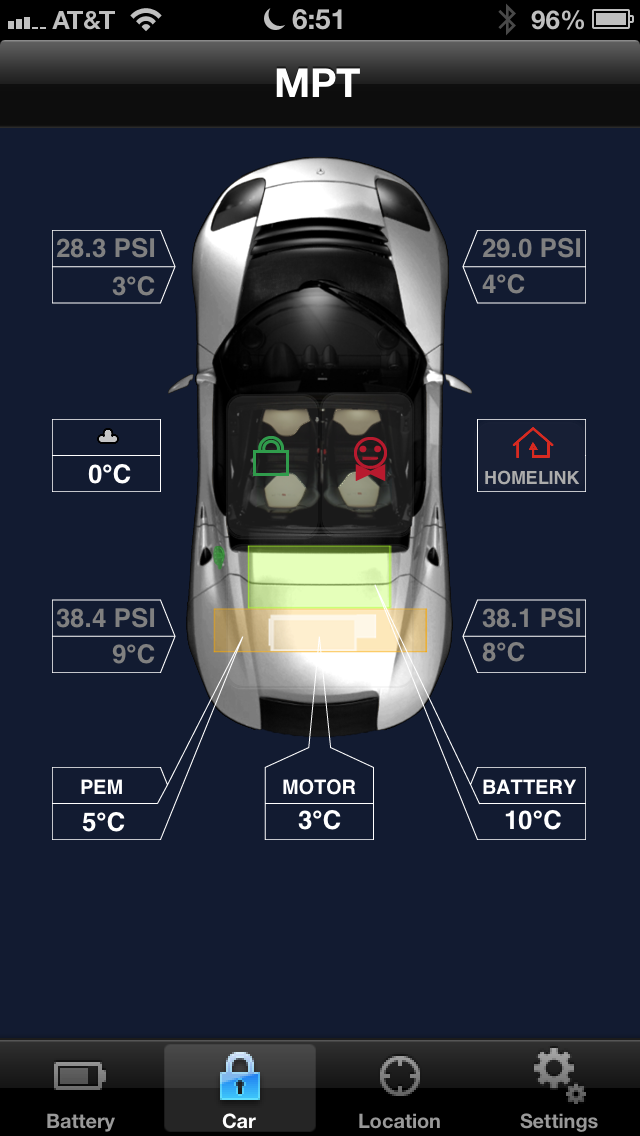
It’s time to let my ever patient and trusty sidekick have his say – he’s chosen “Consumption” as his topic.
Urgh, I hate winter, nothing works; I don’t work so well, my car doesn’t work so well and even the cats expect an extra scoop of food to keep them working.
Thanks goodness for the Christmas and New Year Holidays to break up the tedium of winter! It doesn’t matter how or where Jesus may have come from – God, his mum, doesn’t matter, because we get to celebrate the birth of a man who thought that it might be a nice idea to get along with each other for a change, and that’s a great excuse to eat a lot of sumptuous food and throw an extra log on the fire to stave of the wintery mix outside.
“Feel the benefit”
As I sat at my in-laws house, the heat from the wood-burning stove almost melted us all. The raging flames inside blasted out an invisible wall of heat into a room that was otherwise crisply cool enough at its edges to ensure that you could “Feel the benefit” as my Gran’ used to say.
Now, why don’t they have wood-burning stoves in cars? I mean, sure, it might be inconvenient and time consuming but, in the near future, when we have self-driving cars, we’ll have lots of extra time for that kind of stuff. Why do we have to make do with battery sapping electric heat? Maybe we don’t, and maybe it’s not that sapping.
I have a 76 mile round trip commute each day and, left to my own devices, I’ll have the inside of the car warm enough to make the stereo controls go soft. This is fine – I have a Tesla Roadster (‘Roaster‘), it has more electrical power behind my head than a small sub-station and I don’t care if I have to fill it up every day – nice! Well, until I have to take the ActiveE ’cause the Roaster’s in the shop.
In the summer, I could do the daily commute with 20 miles to spare at the end but now, with sub-zero temperatures and thin blood from living in the USA for too long, I don’t know if I can make it. However, I’ve been experimenting and, with ZERO tow-truck-home events I can report how. But first, why no wood-burning stove?
It seems that there are three ways to heat an electric car:
1 – Super-simple-Tesla
The Tesla takes the simplest approach to heating – a 4kW electric air heater with a thermostatic control. The Tesla approach places a simple electric element heater driven straight off the battery at 300-400v. On a cold morning there’s warm air flooding out before I’ve turned the car around in the driveway. It’s lightweight and compact but, it does ‘fry’ the air a little – just like those little fan heaters you can buy. Until recently, it struggled to keep the cabin warm on the coldest of mornings and Tesla owning friends up north in Canada talk of frosty feet for most of the year. Post recent upgrade, where Tesla fitted extra insulation into the cabin and re-routed the airflow things are much more toasty with the coldest weather, so far this year, not being able to defeat it.
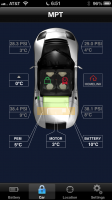
As lithium ion batteries can be damaged through charging when the temperature is really low -20°C / -4°F the Roadster will spend up to an hour in the depths of winter warming up the batteries before charging. Tesla even offers a ‘Storage’ mode that keeps the batteries around 20% charge whilst you’re away on your holidays. Over Christmas whilst in the UK, I received notifications from the car every day or so to let me know that a charging cycle had started with a little warm-up first. Tesla aims to keep the temperature of the batteries at a lifetime average of 25°C / 77°F.
It’s probably worth mentioning here that, if you’re thinking of buying an electric car, you needn’t fear damaging the batteries with cold temperature. Whilst they can be damaged by exposure to extreme high temperatures of 60°C / 140°F and above, the cold doesn’t harm them. They still work at -40°C / -40°F but the performance is very poor due to high internal resistance (true of me at low temperatures too) and they can be damaged if charged at high currents at those low temperatures.
2 – Bolt-on-ActiveE
The ActiveE makes use of a 4.5kW immersion water heater. Based on the plumbing that the donor car has, BMW added an electric water heater, with three heating elements, powered from the high voltage battery at 250-400v, into the cooling circuit. This heats up the water as an old fashioned ICE car might have done back in the day, circulating it around a heat exchanger to pass that heat into the cabin. The results, whilst a little slower to get going, delivers a more traditional high volume of warm air instead of the Tesla’s smaller quantity of lightly super-heated O2.
The ActiveE also needs to heat the batteries. To do that, it opens a valve to divert the cooling loop around the batteries. Interestingly, this means that it can’t heat both the batteries and the cabin at the same time.
The ActiveE offers a convenient ‘pre-heat’ feature that allows the car to be warmed up before it’s needed on a morning. Set from a timer or, from a remote iPhone App when you remember, it operates in two stages:
- Battery heat – the system heats the coolant to warm the battery up to 20°C / 68°F
- Cabin heat – Once the battery hits the right temperature, the heat is diverted to the cabin to warm it up.
The time taken to complete the cycle varies greatly depending upon the temperature of the battery but, at around freezing point, general consensus says that it takes about an hour to complete the cycle.
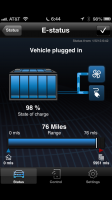
Is it worth pre-heating? Oh yes! Not only is the cabin warm but the whole cooling system is toasty and it acts as a large heat reserve. The battery is also kept warm, this ensures that it performs well (full power for rapid acceleration) but also, it can take the full output from the motors re-generation which, combined with not having to take battery power to heat the cabin means a significant increase in range.
3 – Fire!
Unsurprisingly given the cold winters, Volvo, based in Sweden, decided that the power consumed by electric heat would not be a reasonable compromise. They chose to add a catalytic heater powered by a small 12L tank of bio-ethanol. However, fear not good friends of the earth, the Volvo system includes all three solutions – a pre-heater warming the water system, a hot-air heater and the bio-ehtanol solution so, for shorter range trips electric can be used but for those chilly skandi winters, bio-ethanol will keep the range up and your toes toasty. (I want one but ElectraGirl says ‘Just take a blanket!‘)
One thing all EVs have in common though is electric seat heaters – why use a 4+kW heater to warm the air when you can just warm the human for a fraction of the power… just 100w max in the case of the Tesla. This does seem to make sense as I found out this week traveling 76 miles a day at sub-zero temperatures on the highway, in comfort.
“76 miles with loads to spare”
Before setting off, I pre-heat the car. This can be pre-programmed the night before.
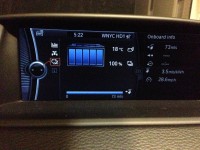
As the car is already warm I can set the heating fairly conservatively but, here’s where I seem to have found a bug in the HVAC, or at least ours. From time-to-time, when set to full auto, the ActiveE (our ActiveE anyway) will sometimes turn on the heating full on and direct that hot air to the upper vents. I can’t have uncontrolled hot air puffing out so I’ve set the air distribution and fan to manual with just temperature left on auto:

Also, note the recirculate setting – keeping that warm air inside – and, seat heater on.
For those that aren’t familiar with the ActiveE, there is a driving mode called ‘EcoPro’ – I am an eco pro so I don’t need this, plus, it uses more power than I do as it turns off the seat heater – baffled? I am.
What you can’t see in these photos is me – For reference, I’m wearing my long coat, my cap and, a blanket Yes, you read it, I’m not writing that any bigger – EG insisted and who am I to argue? With my cap and… the rest, I look like my Grandad… in 1940.
“I cruise at 65mph”
My journey is essentially just a winding trip down the mountain then two stretches of flat, level highway. I cruise that at 65mph, day-in-day-out – ignore the gauge on the left, that’s its way of showing 65mph:
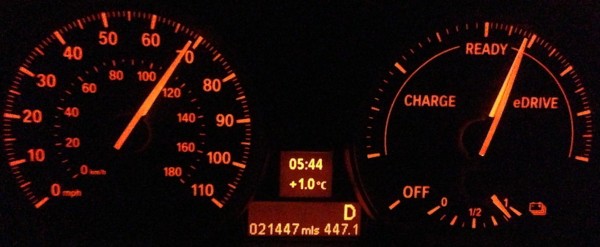
Some time later, and we’re there:
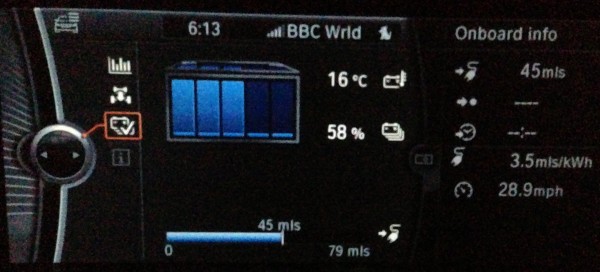
The journey home is a little more stressful. The first 8% of battery disappears in a few miles as the heater claws to get the cabin up to 18°C / 64°F.
As an aside: I’ve been surprised at the number of people that, upon learning that the Tesla cabin heater is 4kW begin to work out in their head – “er, I have a two hour commute, that’s 4kW each hour, that’s 8kWh, that’s 32 miles range! Wow!” – STOP!
Like the cabin heater, the seat heater and your home heating won’t run flat-out all the time. Once the selected temperature is reached, the heater backs down or even switches off altogether. This has the effect of using full power initially but far less, even zero, once the car is warmed up – another reason why consumption isn’t easy to calculate.
With the car warmed up, consumption falls and we’re home with plenty to spare:
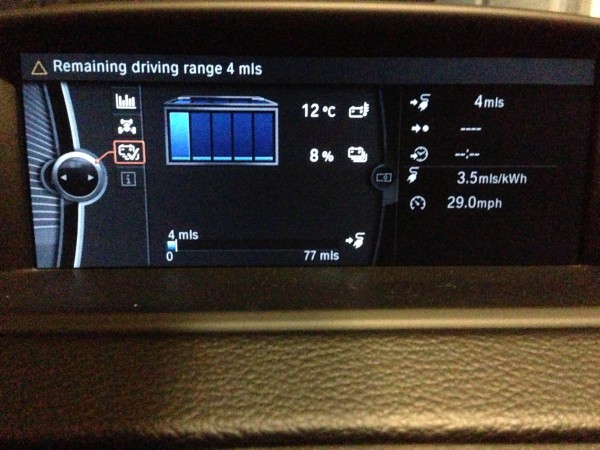
…No, really, you try walking 4 miles and then tell me that’s not far! Actually, 4 is a poor prediction, I’ve probably got 8 in there – my last 7 miles of driving are right back up the mountain – just enough for the guess-o-meter to begin with the pessimistic predictions.
But what are the variables? What if I’d driven faster, slower, set the heat higher?
Well, without wanting to get stranded in the ActiveE, I’ve been looking at the consumption of power in the Tesla to see what difference exists and, I can report, it’s a lot and the biggest culprit in the winter range issue; not the cold battery, not the wind and rain but – cabin heating.
The Tesla, in summer averages about 225Whr/mile / 4.4mls/kWh with consumption increasing as the days get longer. With no heat on in the Tesla (that was chilly!) the consumption on a cold but dry day was no different than summer, on a wet and windy day, the consumption rose to 235Whr/mile / 4.25mls/kWh but, on a cold, dry day with the heat on consumption rose to 290Whr/mile / 3.4mls/kWh, in fact, on one day I had it up to 333Whr/mile / 3.0mls/kWh !
How was range affected? Well, without running the battery flat each day, this is trickier to determine however, the Roadster tracks the available range based on the effective storage capacity of the battery – basically, it watches how much power goes in and what comes out to maintain a measured AHr rating for the pack. This rating manifests itself as an estimated ‘Idea range’, i.e. how far the car will go in summer at 55mph with no AC on. When the car was new, a standard charge would yield as much as 192 miles in summer, three years in and that’s down to 187 but, in winter that falls. Today, with a cold battery it can be as low as 181 – that is to say, the impact of a cold battery (10°C / 50°F) is equal to 6 miles range compared to a summer battery around 30°C / 86°F. Switch to looking at the estimated range and the picture is very different – with no heat, it’s about the same as the ideal, maybe a few miles under as I’m traveling 10mph faster. Switch on the heat and, well, we’re down to an estimated 160 miles – that’s a 30+ mile difference or about 16-20%. This also ties in with our experience in the ActiveE which falls from a summer high of 95 miles to 80 in the cold winter.
Another aside/rat-run: I’ve been experimenting with charging at a slower rate all night instead of a fast charge as soon as I get home – the idea being to keep the batteries warm all night – the result is positive. By tuning the current to restore all of the charge through the night (11A at 240v btw) the Ideal range and therefore the battery capacity has increased from 181 miles to 184 miles. Only three, yes, but, three for free!
What’s the problem, is there a fix?
The problem is that there is, IMO, a great deal of mis-understanding around the impact on range, that the cold weather has – it can be significant and it can, not. Add to this speed, wind, terrain and general sun-spot activity and you have a really complex model. So far, gut feel seems the most accurate but, you need a few winters behind you before that kicks in. What about the EV ‘newb’? They buy a 100mile EV, jump in, fire up the heat, head out on the highway and spend the afternoon making small-talk with the tow truck guy.
Another solution might be more sophisticated prediction systems – the car knows that I drive to work each day – it’s been with me every time – it could look at the hvac settings and, understanding the history of the terrain and the weather at the destination it could make a suggestion – “I don’t think you should do that Dave” – it’d be nice if it knew my name though.
The last, unspeakable solution, might be to include a back up power source like a gasoline engine, hmm, not my cup of tea but it might be a better solution until we get this predictive stuff nailed.
— Regular coverage will return next time —
To learn more about Volvo’s solution:


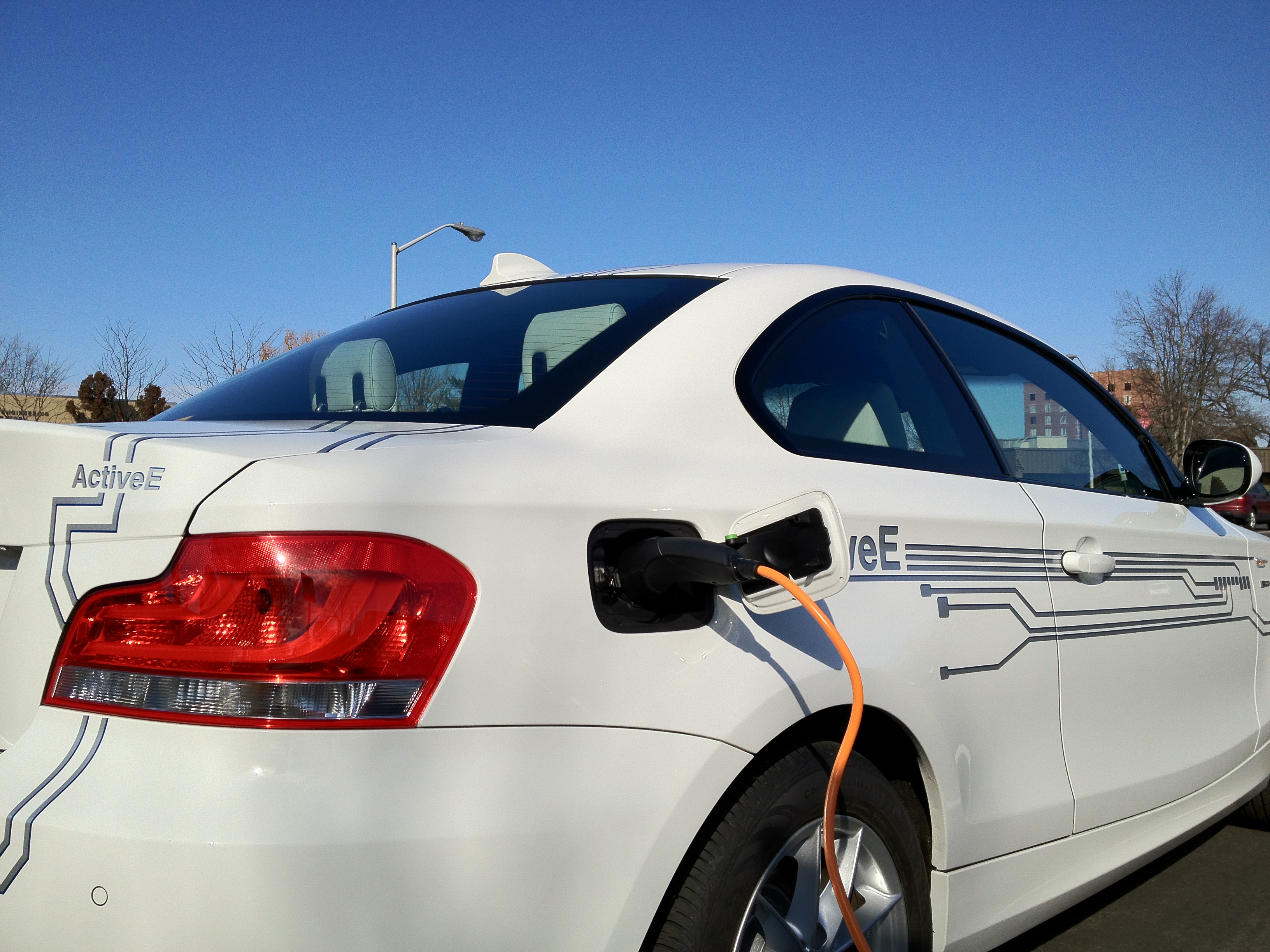

Comments